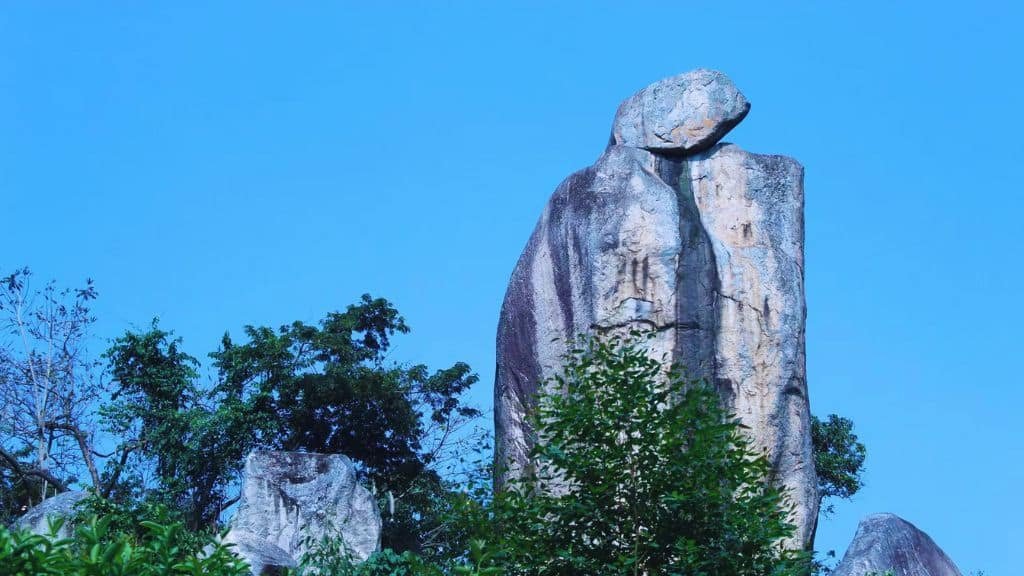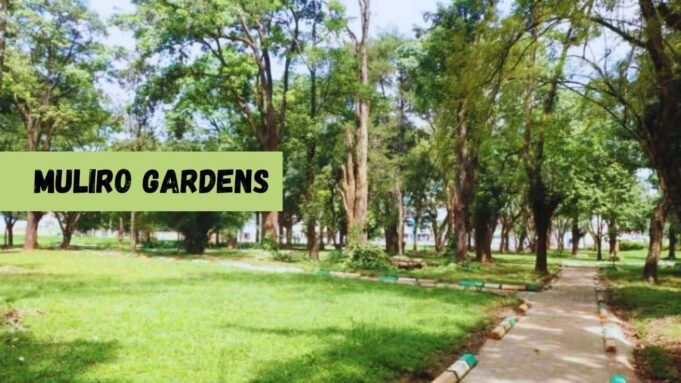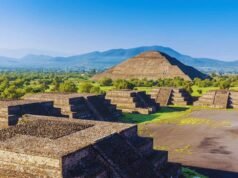In the heart of Kakamega town lies Muliro Gardens, a vibrant green space that blends history, culture, and relaxation. More than just a park, it’s a living monument honoring freedom fighter Masinde Muliro, while offering locals and visitors a refreshing escape from urban bustle.
From its once-controversial past to its stunning transformation into a family-friendly haven, Muliro Gardens tells a story of resilience and renewal, making it one of Western Kenya’s must-visit landmarks for leisure, reflection, and community spirit.
A Hidden Gem in the Heart of Kakamega
Right in the middle of Kakamega town sits Muliro Gardens, a beautiful blend of history, nature, and community spirit. Named after Masinde Muliro, one of Kenya’s most respected freedom fighters, the park is more than just a patch of green; it’s a living monument, a recreational hub, and a mirror of Kakamega’s journey through time.
A Walk Through History
Muliro Gardens isn’t just a place to relax; it carries the legacy of Masinde Muliro, a man who dedicated his life to democracy and equality.
The gardens were set up as a civic space where people could gather freely, making it one of Kakamega’s most symbolic landmarks. For many locals, a stroll through the park feels like a walk through history, blending nature with national pride.
The Dark Chapter Everyone Remembers
Every great story has its low moments, and Muliro Gardens had one in 2011. The park’s reputation took a hit after scandalous incidents of public indecency made headlines. For a while, it became the butt of jokes, overshadowing its cultural importance.
But Kakamega locals weren’t ready to let their green space be reduced to a scandal. Community leaders, churches, and the county government rallied to restore dignity to the park.
Related: Diverse Wildlife Experiences in Kenya
A Stunning Comeback
And what a comeback it has been! Backed by a KSh 61 million facelift through the Kenya Urban Support Programme, Muliro Gardens has been transformed into a vibrant, family-friendly park. Gone are the dark corners and dilapidated benches; in their place are paved walkways, fresh landscaping, clean facilities, and even garden lighting. At its heart now stands a proud statue of Masinde Muliro, reminding visitors of the values he stood for.
What to Expect When You Visit?
Muliro Gardens today is a must-see for anyone in Kakamega. Some highlights include:
- Indigenous trees and flowers offer shade and beauty.
- Neat benches and cabro-paved paths for strolls and relaxation.
- Professional photography services run by the Kakamega Photographers’ Sacco.
- On-site cafeteria and eco-toilets for convenience.
- Free Wi-Fi makes it easy to relax, chat, or work remotely.
Its location couldn’t be better, nestled between Kakamega–Kisumu Highway, Mumias Road, and Sudi Road, right next to the county headquarters.
Fun Facts About Muliro Gardens

Muliro Gardens isn’t just a park, it’s a space full of history, charm, and surprises. These fun facts reveal the unique stories, culture, and little secrets that make it special.
The “Lungs of Kakamega”
Muliro Gardens is often called the “lungs of Kakamega town” because of its many indigenous trees that help clean the air and provide cool shade in the bustling urban center.
A Photographer’s Paradise
The park is home to the Kakamega Photographers’ Sacco, a unique group of professional photographers who not only maintain the gardens but also offer affordable photo sessions. On weekends, it’s common to see families, couples, and students lining up for portraits.
A Living Monument
Unlike many purely recreational parks, Muliro Gardens doubles as a national monument. The statue of Masinde Muliro at its center is more than just decoration; it’s a symbol of Kenya’s struggle for freedom.
From Scandal to Pride
Believe it or not, Muliro Gardens was once infamous for inappropriate public behavior that shocked the nation in 2011. But thanks to community action and county investment, it has since been transformed into one of the cleanest, most respected public parks in Western Kenya.
Free Wi-Fi in the Park
Yes, you can sit under a tree in Muliro Gardens and surf the internet for free! The county government added Wi-Fi access as part of its effort to modernize public spaces and attract more young people.
The Busiest Days
Weekends and public holidays see the biggest crowds, with the gardens buzzing with activity, families picnicking, students relaxing, photographers clicking away, and vendors selling light snacks. Weekdays, on the other hand, offer a much quieter and peaceful atmosphere.
A Learning Spot
Schools in Kakamega and beyond often bring students here for educational tours. It’s not just a picnic site but also a place to learn about history, conservation, and urban renewal.
READ: The Wonders of Kenya Safari
Community Spirit at Its Core
What makes Muliro Gardens unique isn’t just its design but its community-driven management. The photographers’ group entrusted with the park’s care keeps the grounds safe, clean, and welcoming, while also earning a livelihood through photography. This balance of preservation and entrepreneurship has made Muliro Gardens not just a park, but a community project that works.
Why Tourists Love It?
For visitors, Muliro Gardens offers a perfect breather between exploring Kakamega Forest, sampling the region’s famous chicken delicacies, or diving into Western Kenya’s cultural experiences. It’s a great spot for solo relaxation, family outings, or even a quick photo shoot to capture the town’s vibrant atmosphere.
Recent heavy rains have damaged some trees, raising concerns about safety. There’s also the constant need for upkeep, landscaping, and stronger night security. But with the county’s ongoing commitment, Muliro Gardens is likely to keep improving.
Muliro Gardens – Tips for Visitors
- The best time to visit is early morning or late afternoon, when it’s cooler.
- Entry: Free (perfect for families and budget travelers).
- Safety: Stick to open areas and visit during daylight hours.
- Don’t miss: A photo by the Masinde Muliro statue, it’s a local favorite.
A Symbol of Renewal
Muliro Gardens’ story is one of resilience and reinvention. From a scandal to a shining example of urban renewal, the park now stands tall as Kakamega’s green jewel. It celebrates both the memory of a national hero and the community’s ability to reclaim, restore, and reimagine public spaces.
So, whether you’re a local seeking fresh air, a traveler exploring Western Kenya, or just someone curious about how a park can carry history in its soil, Muliro Gardens is a stop you don’t want to miss.
Read More: Kilimanjaro or Mount Kenya Hiking
Frequently Asked Questions (FAQs) About Muliro Gardens
Curious about Muliro Gardens? This FAQ section answers common questions about the park’s history, location, features, and visitor experience, helping you discover why it’s Kakamega’s treasured green space.
What is the history behind Muliro Gardens?
Muliro Gardens is named after Masinde Muliro, a prominent politician and freedom fighter who played a crucial role in Kenya’s independence movement. The park was established both as a civic space for relaxation and as a monument honoring his legacy of democracy, justice, and unity.
Where is Muliro Gardens located?
The park sits at the heart of Kakamega town, bordered by the Kakamega–Kisumu Highway, Mumias Road, and Sudi Road. Its central location makes it easily accessible from any part of the town and a convenient stop for travelers passing through Western Kenya.
Is there an entry fee for Muliro Gardens?
No entry is free for the public. This makes it one of the most inclusive and family-friendly attractions in Kakamega. However, services like professional photography inside the gardens are offered at an extra cost.
What makes Muliro Gardens unique?
Unlike ordinary parks, Muliro Gardens combines history, culture, and community spirit. It’s a green space that doubles as a monument, managed by the Kakamega Photographers’ Sacco, which not only maintains the grounds but also provides photography services. This community-driven approach gives the park a unique identity.
What can visitors do at Muliro Gardens?
Visitors can enjoy relaxing walks along cobble-paved paths, rest on benches shaded by indigenous trees, take professional photos, or connect to free Wi-Fi. The gardens are also a popular spot for family picnics, school outings, and weekend hangouts.
Is Muliro Gardens safe for tourists and families?
Yes. After its rehabilitation, the park has been fenced, well-lit, and fitted with security measures. The Kakamega Photographers’ Sacco helps ensure order and safety. For the best experience, it’s recommended to visit during daylight hours (between 6 a.m. and 6 p.m.).
What is the best time to visit Muliro Gardens?
The best time to visit is in the early morning or late afternoon, when the weather is cool and the park is less crowded. Weekends tend to be lively with more visitors and photographers, while weekdays are quieter and more peaceful.
Are there facilities inside Muliro Gardens?
Yes. The gardens are equipped with eco-toilets, a cafeteria, benches, garden lighting, and free Wi-Fi. These amenities make it not just a green space, but a comfortable and modern recreation spot for both locals and tourists.















